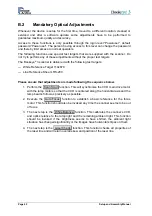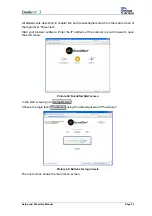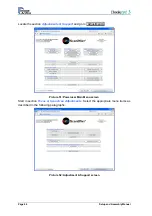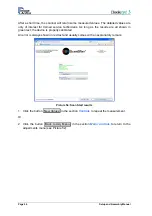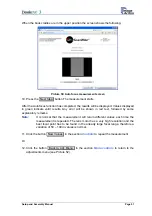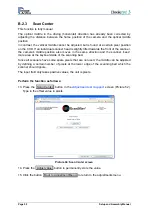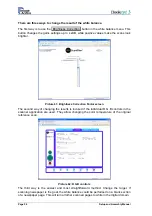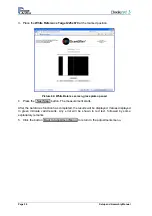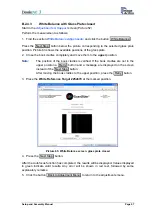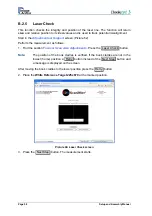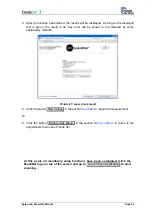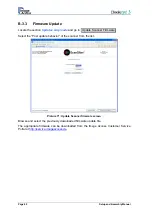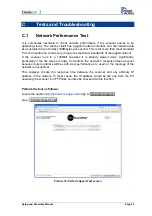
B.2.4
White Balance
B.2.4.1
Some Basic Information
The white balance function is the most important function for consistent image quality.
This is especially important in the type of open scanning environment present in planetary
scanners.
Although all scanners have a function similar to the white balance, the light situation inside
a flatbed scanner is much more controlled than with the Bookeye® family of scanners. A
normal flatbed scanner has to be calibrated once in a while, maybe every couple of
weeks. This is necessary to compensate for light degradation, accumulation of dust, loss
of sensitivity of the CCD and other long term effects.
By contrast Bookeye® scanners have to be calibrated more than once a day if the
ambient light situation changes significantly.
To be able to fully understand the results of a white balance, the following
information is helpful:
The scanner has built in light sources of known and stable quality consisting of the most
state-of-the-art white LEDs but generally receives some significant ambient light from the
ceilings or windows of unknown intensity, color temperature and usually with some
amount of flicker.
During the white balance measurement, all internal and external light sources are
combined and illuminate the target. The intended target for this function is the
White Reference Target 225x670
, which has a very even, non-glossy and extremely
white surface.
In the first step, the overall sensitivity of the scanner is adjusted in such a way that the
brightest area results in an almost saturated output signal. This assures that the largest
density range possible is used. After this adjustment is done, the uneven light distribution
on the CCD caused by the imbalance of the lamps, the ambient light introduced, the
imperfections of the lens and other factors; has to be compensated for. This measurement
results in a correction function that has higher correction factors at the upper and lower
edges of the scan bed and almost no correction in the vicinity of the brightest area.
If the above is understood, it is understandable that the quality of the test target is of
utmost importance to the result of the white balance. The test target is a reflective one and
reflects the light in a diffuse way. If the test target has dirt, wrinkles or anything on it visible
to the human eye, the CCD will also see this and will overcompensate in these areas.
Although the internal software has been programmed to eliminate these imperfections to a
certain degree, it still leads to unreliable results if the target is not good enough.
If the target is good enough and ambient light level is not too high, the scanner will
calibrate successfully. Calibration means that the “white” of the test target in the given
illumination situation produces a “white” output in the digital domain. Consequently, all
scans of white paper that has different properties than the test target results in brightness
and possibly color shifts. Because the inexperienced user may become irritated if the
“white” paper turns out to be lightly grayish and somewhat uneven; many competitors
clamp the brighter pixels to fully white. This looks better but introduces artifacts, therefore
this is only optional with a Bookeye®.
Setup and Assembly Manual
Page 53
Содержание bookeye 3
Страница 1: ...V Ve er rs si io on n R R1 1 Setup and Assembly Manual This device is compliant...
Страница 2: ...File BE3 R1 SetupAndAssembly H doc...
Страница 11: ...Setup and Assembly Manual Page 11...
Страница 79: ...Notes Setup and Assembly Manual Page 79...




